Vet reveals how to get a cat used to a harness in six simple steps
Trying to figure out how to get a cat used to a harness so you can walk them outside? These tips will help...
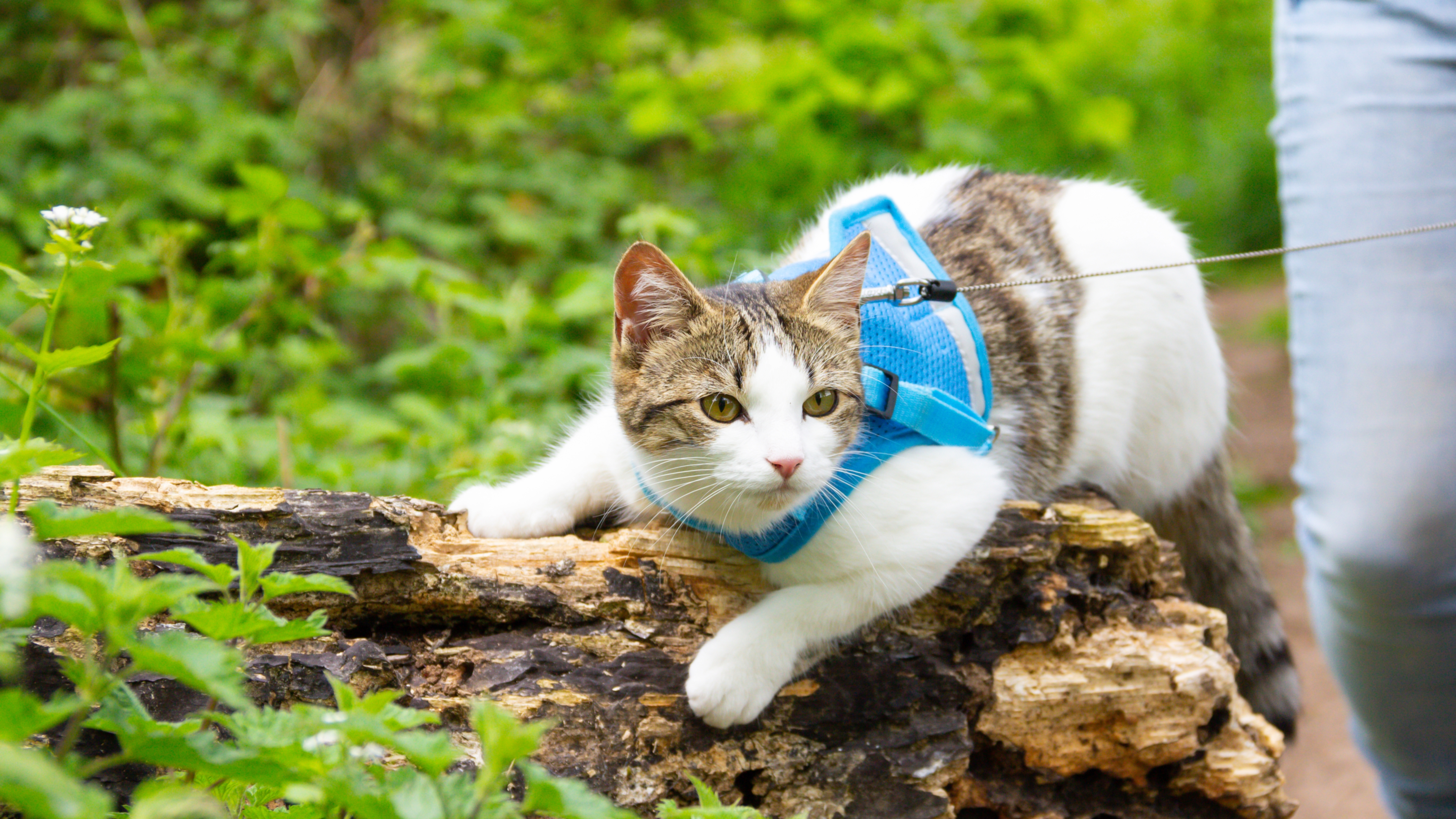
The idea of trying to figure out how to get a cat used to a harness can feel daunting for many pet parents — which is hardly surprising when you consider that most of us are used to pounding the pavement with our canine companions, not our feline friends.
However, believe it or not, many cat breeds will quite happily let you pop them in one of the best cat harnesses if it means they get to experience all the excitement of the great outdoors. Outgoing and active breeds, like the Bengal and Bombay, for example, tend to do well with harness training and love accompanying their owners on nature-based adventures.
When it comes to training your cat to wear a harness and walk on a leash, a slow and steady approach is best. Investing a bit of time in the short term will pay dividends in the long term. Below, Dr. Rebecca MacMillan outlines the steps to take to help your cat get comfortable wearing a harness — and it’s easier than you might think!
How to get a cat used to a harness

1. Introduce your cat to the harness
"It is important to start slowly when introducing your cat to a harness," says Dr. MacMillan. "Start by simply leaving the harness out in places where your cat often visits, like a favorite sleep or play area. Let them approach and sniff it in their own time. You might find they start playing and rubbing themselves against it."
2. Let your cat get comfortable with the harness
"The next step is to start touching the harness against your cat. You could start by gently holding it towards their body or laying it across their back," Dr. MacMillan explains. "While doing so you must praise and reward your cat, so that they start to build a positive association with the harness. Very gradually, over time, start touching the harness against other parts of your cat’s body, like their paws and chest. Continue to give your cat plenty of treats and praise."
3. Put the harness on your cat
"Once your cat is comfortable with the harness being touched against their body, you can start to put it on your cat properly," says Dr. MacMillan. "Find a time when your cat is relaxed, and you are not feeling rushed. Slowly slip the harness onto your cat, praising your cat and offering treats throughout. Only leave the harness on for a few seconds before taking it off again. You should repeat this on several different occasions over the next week or so."
4. Practice indoors
"When you are introducing your cat to their harness you must practice indoors," Dr. MacMillan stresses. "There are too many risks and distractions outside, so this shouldn’t be tackled until your cat can comfortably wear their harness for an extended period. You will also want to start clipping the leash onto the harness while indoors too, so that your cat can get used to that slight feeling of weight and tension. Avoid pulling them around, let it hang loosely and follow them around to begin with."
5. Increase the time your cat wears the harness
"While continuing to practice indoors, slowly build up the amount of time that your cat wears their harness for," advises Dr. MacMillan. "You could start playing with them while they are wearing it, feed them their dinner, or let them snuggle on your lap.
This will help them to forget they are wearing it and become completely comfortable with how it feels. Just remember not to leave the harness on all the time, as they may find it uncomfortable for extended periods. It can also stop them from being able to groom properly.
You should also continue to practice with the leash. Gently guide them on the leash around the house, with the help of some treats and cat toys."
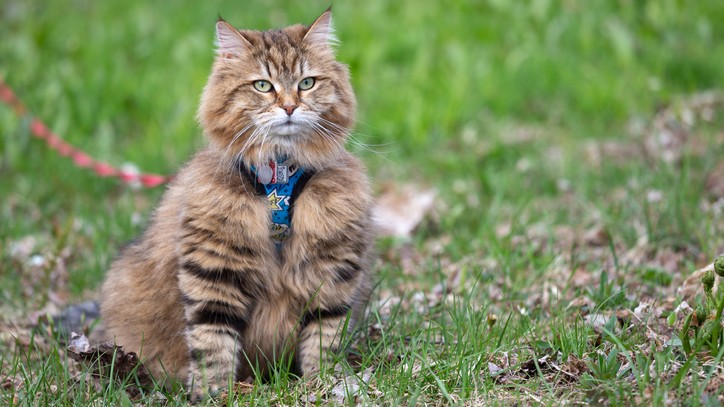
6. Move your training outdoors
"Once you are confident that your cat is completely comfortable with their harness and leash you can start moving your training outdoors," Dr. MacMillan says. "Start somewhere safe and enclosed, like a balcony or fenced garden. Keep sessions short, to begin with, and remember the praise and treats. If your cat seems anxious or scared, then stop the session and take them indoors again."
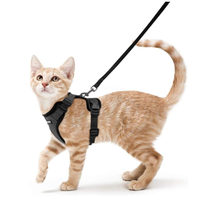
Available in a huge range of colors and sizes to suit the style preferences of every kitty, this super affordable harness and leash set is easy to put on and comfortable to wear.
Types of cat harness
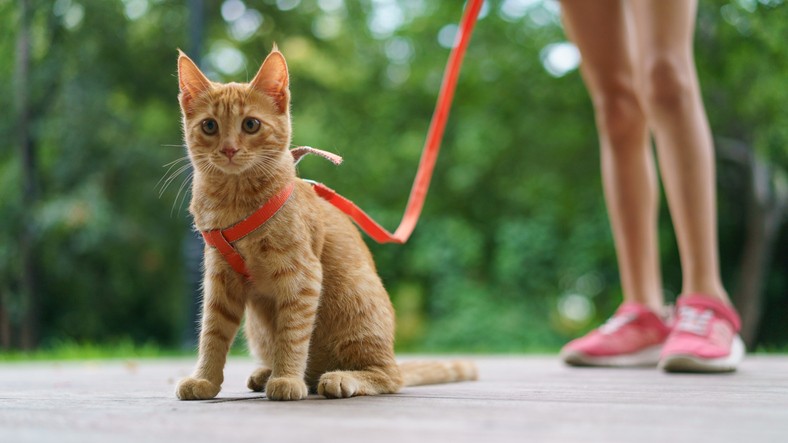
There are three general styles of cat harness to choose from on the market:
H-harnesses: These generally clip together around your cat’s body, evenly distributing pressure from the lead. They’re ideal for nervous or wary cats as you don’t need to slip it over the cat’s head to get it on.
Vests: This type of harness provides even greater coverage / surface area over your cat's body. If you’ve got a cat who you think might be adept at slipping out of an H-style harness, then the vest harness can be a little more secure. These are also very similar to typical dog harnesses, but it’s best to buy or use one which has been specifically designed with cats in mind if you can.
Jackets: With even more coverage, this type of harness is akin to putting a coat on your kitty. These ones provide the most security for a cat who might be prone to slip out of a harness, but as they’re also quite restrictive, not every cat will take too kindly to being put in one.
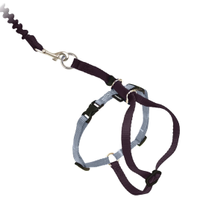
Designed specifically for kitties, the harness applies gentle pressure to the shoulders rather than the neck or throat and has two adjustment points to help you achieve the perfect fit.
Can you harness-train a cat?
It is possible to harness-train a cat, but I always warn cat owners that it can take time. Generally, kittens accept harnesses quicker than adult cats, so it is ideal to start your training young. This doesn’t mean that adult cats can’t be trained, just that it may be a slower process. It is hard to say exactly how long it will take, as each cat is individual. Just don’t rush things and remember to stop and take a step back if your cat seems stressed.
Are harnesses safe for cats?
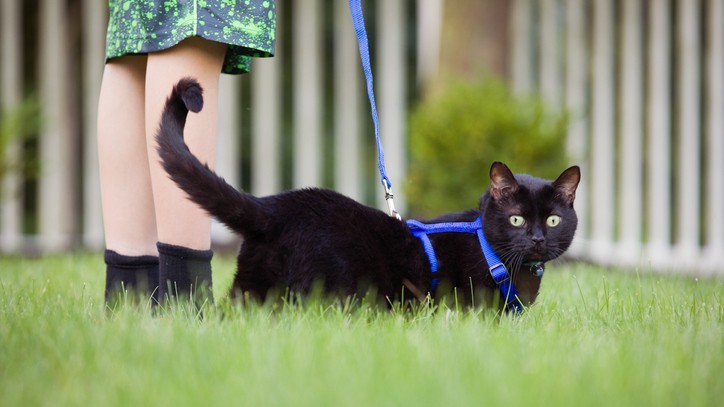
A correctly fitted harness is safe for cats to wear for short periods. It should be snug enough that they don’t slip out of it, but not too tight otherwise this could be uncomfortable. Harnesses should only be worn under supervision and never left on for extended amounts of time. Cats can accidentally get a leg hooked up into their harness which could be dangerous and uncomfortable. Make sure that you purchase a robust, well-made harness and leash, so that nothing breaks if your cat panics while out walking.
What to do if your cat hates their harness
Unfortunately, even if you do everything right, your cat may still seem to hate their harness. Your cat’s personality or previous experiences may dictate how well they accept harness training. Remember that some cats will take much longer than others to accept their harness. You will have to take a few steps back in your training and go to a level that they are comfortable with again for a while. Continue to praise and reward your cat any time they have a positive interaction with the harness. You should also check whether it fits comfortably on your cat. If a harness is too tight or rubbing, then they may resent it.

Rebecca is a vet surgeon who graduated from the Royal Veterinary College in 2009. She has a wealth of experience in first opinion small animal practice, having done a mixture of day-to-day routine work, on-call emergency duties and managerial roles over the years. She enjoys medicine in particular and she is proud to have recently achieved a BSAVA postgraduate certificate in small animal medicine (with commendation). She writes on various feline and canine topics, including behavior, nutrition, and health. Outside of work and writing she enjoys walking her own dog, spending time with her young family and baking!
PetsRadar Newsletter
Get the best advice, tips and top tech for your beloved Pets

Kathryn is a freelance writer who has been a member of the PetsRadar family since it launched in 2020. Highly experienced in her field, she's driven by a desire to provide pet parents with accurate, timely, and informative content that enables them to provide their fur friends with everything they need to thrive. Kathryn works closely with vets and trainers to ensure all articles offer the most up-to-date information across a range of pet-related fields, from insights into health and behavior issues to tips on products and training. When she’s not busy crafting the perfect sentence for her features, buying guides and news pieces, she can be found hanging out with her family (which includes one super sassy cat), drinking copious amounts of Jasmine tea and reading all the books.
